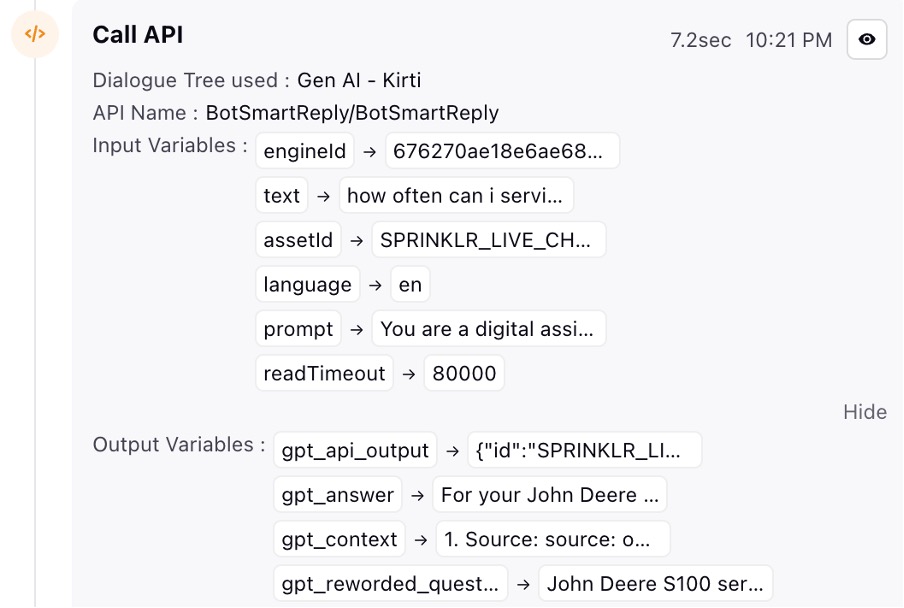Understanding Generative AI Responses
Updated
Before You Begin
Set up content sources, deploy the model in the dialogue tree, and test the bot.
Source of the Final Response
Understanding the API Response Structure
Accessing the API Response: In the debug log, navigate to the Generative AI API node from where the response has been published. Hover over the value in the "gpt_api_output" output variable to get a pop-up box containing the API Response.
Output Variables:
gpt api output – Raw response received from API
gpt answer – Final answer provided by Smart FAQ
gpt context – Sources from which the Smart FAQ responded
gpt_reworded_question – User question reworded by gpt for its context

SuggestedResponses: Provides suggestions to the user's query.
Text: Contains the direct response to the user's query.
Origin of the ResponseSources referenced in brackets [1], etc., correspond to the source numbers listed below (refer to Image #1 for visual guidance).
Locating Sources
You can find the names and page/slide numbers of the files in the 'sources' under the 'additional' field.
Use the source number to cross-reference with the published response.
Identifying Used Excerpts
In the 'placeholders' section, look for the field named 'context'. This contains excerpts from the files or knowledge base uploaded within the Content Sources UI.
This part of the API response helps you verify if the information used to answer the user's query was retrieved from the uploaded content sources.
Additional Information from the API Response
Conv Ended: Always sent as true.
Fallback: Indicates when the user's query is out of scope for the AI.
Question: The reworded user query used to search the knowledge base for context.
What's Next?
Navigate to the content sources and make adjustments to the training data as needed.